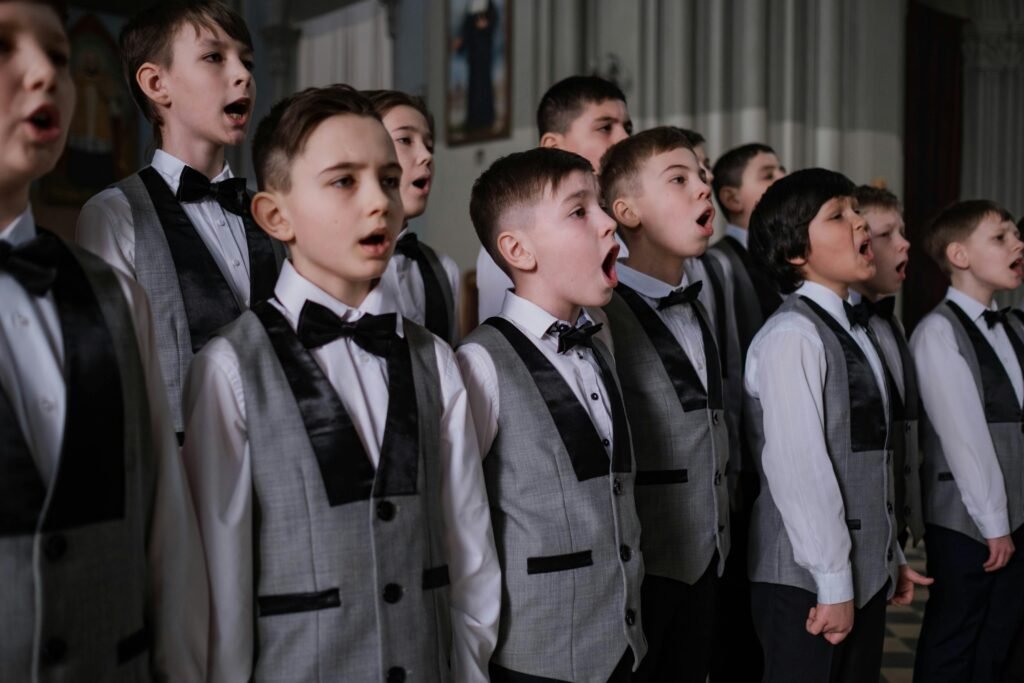In recent years, there has been a remarkable rise in the popularity of virtual choirs, revolutionizing the way choral music is created and performed. Enabled by advancements in technology and the widespread availability of digital tools, virtual choirs have emerged as a dynamic and innovative way for singers to collaborate and create music together, regardless of geographical boundaries. As a professional composer, it’s essential to understand the phenomenon of virtual choirs and their impact on the world of choral music. In this article, we will explore the rise of virtual choirs, the technology behind them, and the creative possibilities they offer in the digital age.

The Evolution of Virtual Choirs
Virtual choirs, also known as online choirs or remote choirs, have their roots in the early days of the internet, where musicians experimented with sharing audio and video recordings online. However, it was not until the mid-2000s that virtual choirs gained widespread attention, thanks to projects like composer Eric Whitacre’s “Virtual Choir” series. Whitacre’s pioneering work brought together singers from around the world, who recorded their parts individually and submitted them online to be compiled into a single performance. Since then, virtual choirs have continued to grow in popularity, with composers, conductors, and singers embracing the concept as a new way to collaborate and connect through music.
Technology Behind Virtual Choirs
Central to the success of virtual choirs is the technology that enables singers to record and share their performances remotely. Key technologies and tools used in virtual choir projects include:
1. Digital Audio Workstations (DAWs):
DAWs such as Pro Tools, Logic Pro, and Ableton Live are used to record, edit, and mix individual vocal tracks. Singers can record their parts at home using a microphone and computer, then export their recordings to be synchronized with others.
2. Video Conferencing Platforms:
Video conferencing platforms like Zoom, Skype, and Google Meet are used for virtual rehearsals and communication between choir members and directors. These platforms allow singers to interact in real-time and receive feedback on their performances.
3. Online Collaboration Tools:
Online collaboration tools such as Dropbox, Google Drive, and WeTransfer are used to share audio and video files between choir members and collaborators. These tools make it easy to exchange recordings and collaborate on projects remotely.
Creative Possibilities of Virtual Choirs
Virtual choirs offer a wealth of creative possibilities for composers, conductors, and singers alike. Some of the key benefits and opportunities of virtual choirs include:
1. Inclusivity and Accessibility:
Virtual choirs make it possible for singers from diverse backgrounds and locations to participate in choral music projects, breaking down geographical barriers and fostering inclusivity within the choral community.
2. Collaborative Composition:
Composers can create new works specifically designed for virtual choir performance, exploring innovative techniques and arrangements that leverage the unique capabilities of remote collaboration.
3. Multimedia Integration:
Virtual choirs often incorporate multimedia elements such as video projections, animations, and visual effects to enhance the audience experience. This allows for a more immersive and visually engaging presentation of choral music.
4. Educational Opportunities:
Virtual choirs provide valuable educational opportunities for singers to develop their vocal skills, music literacy, and technical proficiency in recording and production. They also offer a platform for conducting research and experimentation in choral pedagogy and repertoire.
Challenges and Considerations
While virtual choirs offer many benefits, they also present certain challenges and considerations, including:
1. Technical Limitations:
Not all singers may have access to the necessary equipment or technical skills required for remote recording. Ensuring consistent audio and video quality across all recordings can also be a challenge.
2. Interpretive Challenges:
Conductors may face difficulties in achieving unified interpretation and expression in virtual choir performances, as singers record their parts individually without direct interaction.
3. Rehearsal Dynamics:
Virtual rehearsals may lack the interpersonal dynamics and spontaneity of in-person rehearsals, requiring conductors to find alternative methods for building rapport and engagement among choir members.
Conclusion
Virtual choirs represent a transformative shift in the world of choral music, harnessing technology to facilitate collaboration and creativity in the digital age. As composers, conductors, and singers continue to explore the possibilities of virtual choir projects, they are redefining traditional notions of ensemble performance and expanding the boundaries of what is possible in choral music. By embracing the opportunities and overcoming the challenges of virtual choirs, we can continue to create meaningful and inspiring musical experiences that resonate with audiences around the world.